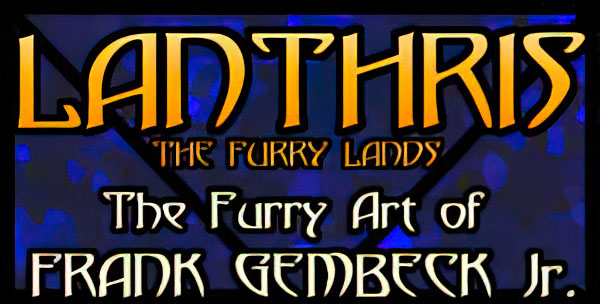I’ve received a lot of email from artists just starting out, and many have asked for tips/advice from me. I’m going to attempt to offer as much general advice as I can on this page.
First, don’t get discouraged or give up because you’re not happy with how your drawings turn out. Above anything else, lots of practice and a willingness to stick to it will make you a better artist. Every artist I know started out not so hot to one degree or another. It’s only through practice that you’ll improve. Experienced artists don’t turn out winners every time, either. Remember, when you look at other artists’ webpages and collections, you’re usually seeing their best stuff. You’re not seeing the many, -many- sketches that didn’t turn out right.
Look at other artists’ work. Look at all kinds of styles; not just furry/fantasy art. By viewing other art, you can get a feel for how the artist works, and that will in turn help you improve. Like how one artist does eyes? Like the fur texture another artist does? Try analyzing it and try it yourself. A lot of artists, myself included, began drawing by copying other artists. That’s fine for when you’re starting out. The key is to gradually move beyond copying and developing your own style. The less you rely on just one artist’s style in favor of drawing together bits and pieces from many artists as you learn, the better, as it will get you going on your own style. Don’t ever feel like you have to conform to any given style, either. Your own imagination is honestly your best guide, and a personal style will just naturally emerge over time.
Furries are not easy to draw. At least, they weren’t for me at first. My background is mostly fantasy art, and when I started doing furries, it was a lot tougher than I thought. Trying to get the right head shape and proportion is tough. Expression can be hard to achieve. Fur texture can be tricky. Paw/hand/foot shape/style and tail placement didn’t come easy. Even choosing a style is tough because furries range from very cartoony to very realistic. I’m still learning stuff about it all.
Studying animals helps a lot. For me, it was easier to take the animal head and add furry/human characteristics to it rather than trying to animalize a human head. I also looked at a lot of other furry artists’ work; really studied how they handled things like facial expressions, paws, and tail placement (something it took me awhile to get the hang of; keep in mind that the tail is a natural extension of the spine and should flow from it).
Try out all kinds of materials; pencil, brush, paint, markers, pastel, ink, digital, etc. My favored medium is marker and color pencils, but I’ve tried out most every other material available. Experiment, have fun with it, and again, don’t get discouraged.
You don’t have to buy expensive pencils or paper to draw. I start every drawing with a normal mechanical pencil. I used regular wood pencils for years, but switched to the mechanical ones for the convenience of not having to sharpen it. I’m not talking expensive mechanical pencils here, either. I tend to draw on smooth sketchbook paper, or, most of the time, plain loose paper. As with materials, though, if you can afford it, try fancier papers. There’s all kinds of drawing surfaces available.
Drawing from life is invaluable. The more you can draw from actual people, animals, objects, the better. Drawing from life gives you a better feel for anatomy and form than anything else, especially when you’re starting out. Photos are the next best thing. They aren’t as good as live models, but they’re a lot more convenient. Ask friends to pose for you. You can also use yourself; especially helpful for hands and feet.
Art classes can help a lot, but they aren’t essential. Personally, the classes I took working towards my Fine Arts degree helped me improve my art greatly, especially figure drawing classes; however, I know plenty of fantastic artists that never took an art class.
How-to art books can help. I only have a few definite recommendations, but I’d suggest going to a larger bookstore like Borders or Barnes & Noble and browsing the art section.
For figure drawing, I highly recommend 3 books by Giovanni Civardi: “Drawing Human Anatomy,” “Drawing The Male Nude,” and “Drawing The Female Nude.”
They’re great reference/instruction, and they’re pretty cheap at $15 each.
I also recommend “How to Draw Comics the Marvel Way” by Stan Lee and John Buscema. A great book for basic life drawing (albiet super-life), composition, storytelling, and inking. It doesn’t matter if you aren’t into comics or doing comics, it’s a good resource.
For animals:
“How to Draw Animals” by Jack Hamm. Good basic animal drawing intructions.
“The Art of Animal Drawing” by Ken Hultgren. The author was an animator at Disney. He breathes life into animal drawing. Very high recommendation.
Photo books are extremely helpful for animal reference, too.
Again, browse the bookstores for more books and inspiration.
Unfortunately, there really are no instructional aides for furries (at least, none that I’m aware of). Honestly, though, I think studying other artists in combination with animal studies and life studies will help greatly.
The above advice is based on my personal experiences. I don’t consider myself an authority on art, furry or otherwise. Hopefully, this gave you some things to consider and will help you out in some way towards your own artistic path. Good luck! 🙂
